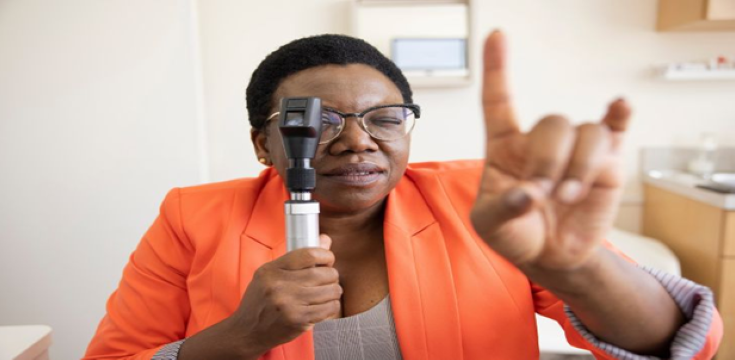Each year, World Retina Day and International Sight Day. both commemorated between the last Saturday of September and 9 October remind us that our vision is one of our most precious assets. And, like any other precious gift, it should be handled with care.
Yet, at least a billion people across the world live with preventable or unaddressed vision impairment. Behind those statistics are individuals, families, and communities whose quality of life is often diminished unnecessarily. The good news is that awareness, early detection, and access to care could drastically bring down that number.
1. Regular eye exams could mean the difference between seeing and not seeing
Many eye diseases have little to no symptoms in their early stages. A comprehensive dilated eye exam allows doctors to look inside the eye, detect silent conditions such as glaucoma or diabetic retinopathy, and intervene before irreversible damage occurs. Unfortunately, millions of people at risk do not book an annual eye exam.
Claudette Medefindt, Head of Science at Retina South Africa, adds, “An annual eye examination can detect retinal disease early and help prevent avoidable vision loss. Retina South Africa exists to support people living with retinal conditions through information-sharing, education, training, and counselling.
“We also work with partners to champion initiatives that promote eye health and encourage regular checks. We want people to know they don’t have to face vision problems alone, reach out to us for guidance, resources, and support.”
2. The retina is the window to sight
This light-sensitive layer at the back of the eye sends signals to the brain, allowing us to see. When conditions such as age-related macular degeneration (AMD) or diabetic macular edema (DME) damage the retina, central vision can be lost. These diseases are progressive and irreversible, but with awareness and early treatment, sight can be preserved.
3. People with diabetes could be at risk for vision loss
Diabetes damages the tiny blood vessels in the retina, causing diabetic retinopathy, one of the major causes of blindness worldwide. Early stages often have no symptoms. That’s why people with diabetes are strongly advised to undergo a dilated retinal exam every one to two years. Caught early, vision can often be saved.
People with type 1, type 2, or diabetes while pregnant risk developing diabetic retinopathy. The longer you have diabetes, the more likely you are to develop it.
4. Vision care matters at every age
Children need vision screening to identify amblyopia or “lazy eye,” a leading cause of childhood vision loss. Adults over 60 face heightened risks of cataracts, glaucoma, and AMD. The American Optometric Association recommends annual eye examinations for everyone over 60 to detect changes before they interfere with daily life.
5. Lifestyle matters
Controlling blood sugar and blood pressure, eating a healthy diet, avoiding smoking, and protecting eyes from UV light all reduce the risk of common retinal and age-related conditions. These are simple, everyday steps that help protect sight into older age.
Besides diet and medications, regular physical activity is an integral part of managing diabetes or dealing with prediabetes, as when you’re active, your cells become more sensitive to insulin, working more effectively to lower your blood glucose.
6. Innovations – new vision
Advances in ophthalmology are changing what it means to live with retinal disease. Therapies are emerging that reduce the burden of frequent injections, helping people preserve vision with fewer hospital visits and more freedom to live their lives. The power of science is creating practical, human benefits that may be life-changing for people experiencing vision loss.
7. See your healthcare professional – literally
Protecting vision begins with simple steps: scheduling an eye exam, talking to a loved one about their risk, or supporting awareness campaigns in our communities. Together, these small actions add up to a significant impact.
Beyond affecting eyesight, vision loss impacts independence, emotional well-being, work, and family life. By protecting eye health, we preserve our sight, safeguard our dignity, live more productive lives, and have the opportunity to live fuller, more satisfying lives.
According to the World Health Organization, at least 2.2 billion people have a vision impairment globally. In at least 1 billion or almost half of these cases, vision impairment could have been prevented or has yet to be addressed.
Beyond affecting eyesight, vision loss impacts independence, emotional well-being, work, and family life. By protecting eye health, we preserve our sight, safeguard our dignity, live more productive lives, and have the opportunity to live fuller, more satisfying lives.
Early detection and timely treatment can change the world right before your eyes. Don’t take your vision for granted. With a bit of foresight, you can keep seeing the best your world has to offer.
For more insights, support, and information, visit https://retinasa.org.za/




